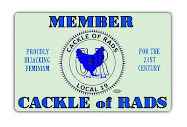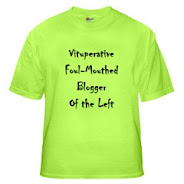If you shoot on an indoor range, you've probably never paid much attention to the backstop. You might have noticed that it is angled up and black.
That's rubber, made of shredded conveyor belts that have kevlar layers. The backstop is probably four feet thick. For a typical twelve-lane range, that's roughly two semi-trailers' worth of rubber.
And, after a few million rounds have gone downrange, the backstop has quite a bit of lead in it. If the lead is allowed to build up to excess, then there can be a risk of ricochets.
The backstop then needs to be cleaned, in a process that's called mining. A crew comes in with specialized equipment-- they scoop up all of the rubber and dump it into a couple of vibratory sifters. The rubber goes out the side and the bullets and frragments thereof fall out the bottom and into five-gallon buckets. (There's also air-handling equipment to keep the dust down.)
Once that's done, then they put the rubber back into place and the range is ready to go. If it's a range that has two sides to it with a separating wall down the middle, the miners will work on one side at night, when it's cooler, and the other side of the range can be open during the day.
When full, each of those buckets weighs about 250lbs. If the range is one where the owners have the mining done on a routine basis, the miners will extract between four and six tons of metal. Right now, that metal is then sold to recyclers for about forty cents a pound (it was up to almost a buck at one point).
Friday, August 28, 2015
Subscribe to:
Post Comments (Atom)









8 comments:
Dunno if it still is, but the Grand National Trapshoot used to be on the grounds of the Dayton airport -- you could see shotguns shooting in your direction as you taxied by (out of range, of course). The sponsors would mine the area with a raking machine, collect the pellets, then spend the rest of the year handloading it back into shells to be sold to the next year's contestants.
Miss Fit, this is NOT an area where I have either experience or expertise, but...somehow, I got the idea that the backstop at a range was a stout piece of steel plate hung at an angle so it would deflect incoming rounds down into a receptacle. I have the phrase "bullet trap" rattling around in my head.
Are any backstops configured thus? Were they ever? Or did I make it all up (not impossible).
FVH
Frank, olderranges were configured like that. The bullets would be deflected down, typically into a sand pit. The issues were noise, lead contamination (dust from bullets coming apart on impact) and damage to the backstop. The metal backstops could be damaged by high-velocity ammunition, one reason why, traditionally, the use of centerfire rifles was forbidden.
This is a side view of a modern range.
The rubber backstops do permit the use of rifles. According to the range owner where I shoot, the rubber backstops are capable of handling .50 BMG. And the steel used in construction doesn't have to be the super-duper high-strength (and very expensive) steel that has to be used for metal backstops.
On the other hand, a modern metal backstop will self-collect the bullets for recycling, so the mining costs are minimal.
In reading around, a rubber-backstop 25 yard range will cost roughly $30,000 per lane. The kind with all metal bullet traps are in the neighborhood of $50,000 per lane. But the all-metal ranges can be build below-ground, if desired. The rubber-backstop ranges have to be at grade level to permit access for the equipment needed to place ther rubber initially and then to mine it.
Those Savage Snail traps work really well. Almost everything that goes through the target ends up in a container for recycling.
They do have a pretty high initial cost.
A local range owner lied to his staff about the dangers of the lead and refused to provide them appropriate protection, leading to both physical harm to several staff members and fines from "the authorities."
I hear this is not uncommon enough.
Danny, sadly, that's true. Having said that, almost all of the ranges that I have used in the last bazillion years had the range staff either behind plexiglas or they were outside and monitored by CCTV.
A couple did have the range officer in the range. One was a small place and the range officer was the owner. The other was larger; I don't remember them wearing respiratory protection or if they rotated in and out.
I did once shoot at a range that the owner was very lax in changing the filters. I wore a half-face respirator when I shot there.
Thanks, Comrade.
Yes, the range owners/managers I've come across are generally very conscientious. I should have specified that this case was specifically about the staff he had "mining" the lead.
Post a Comment